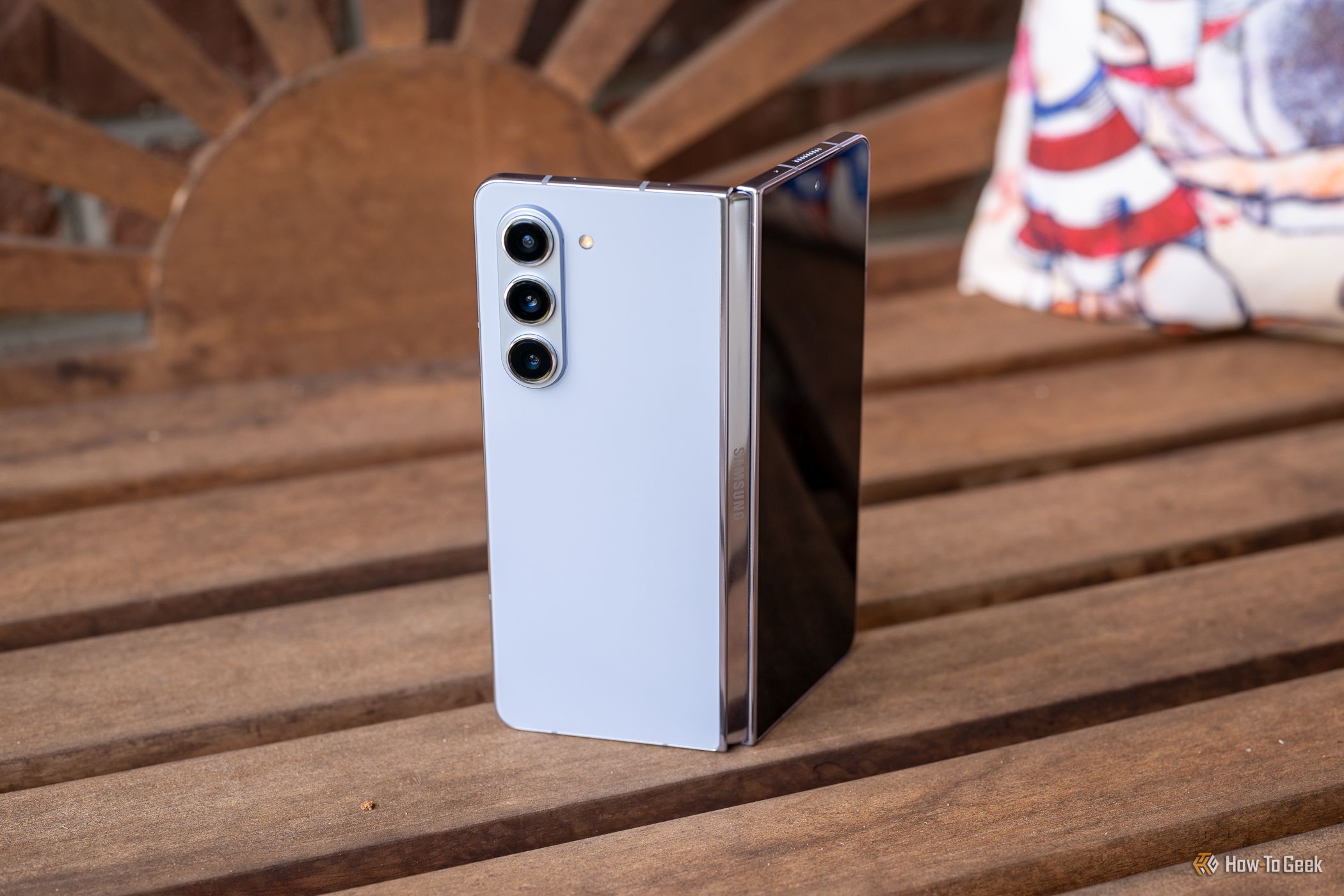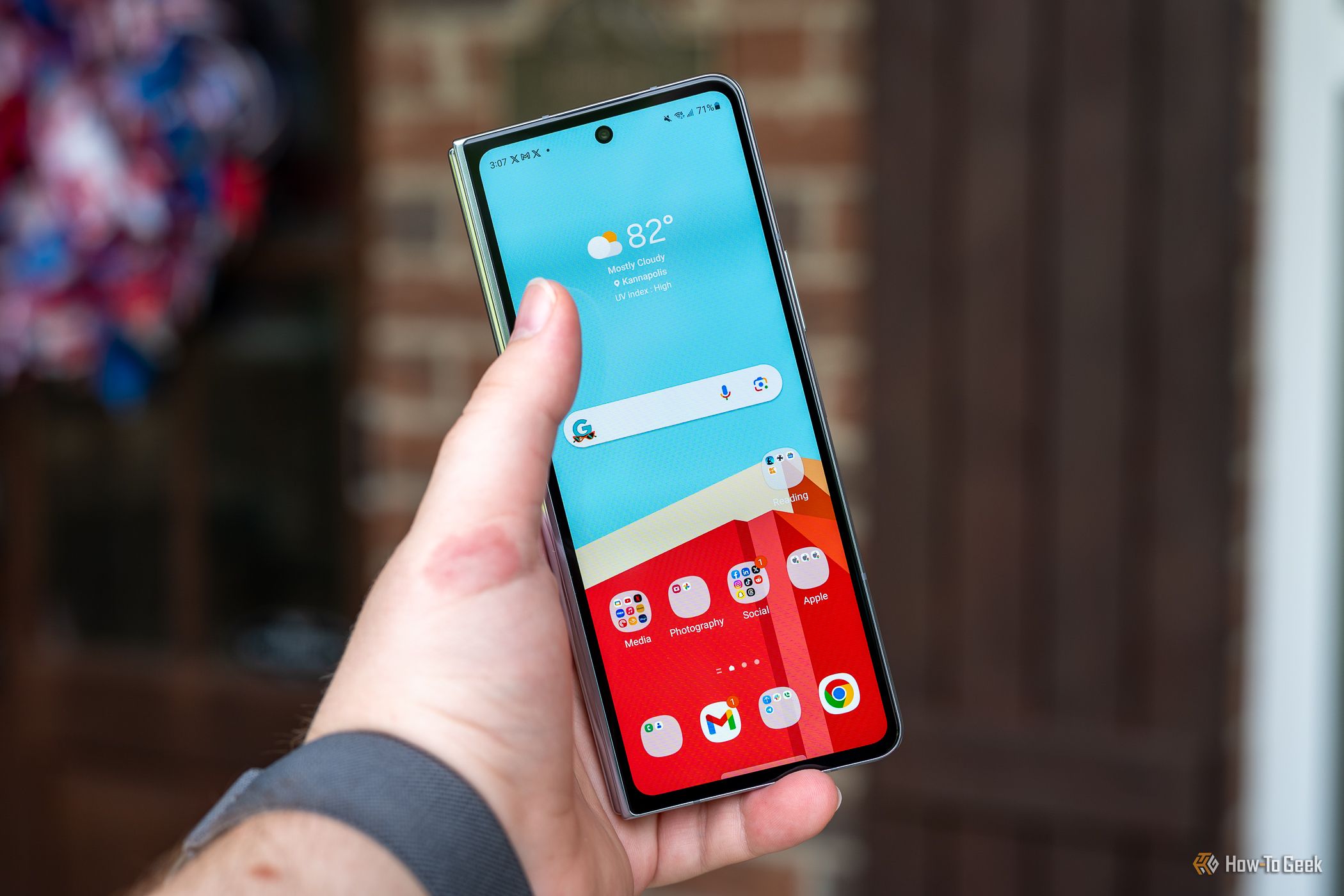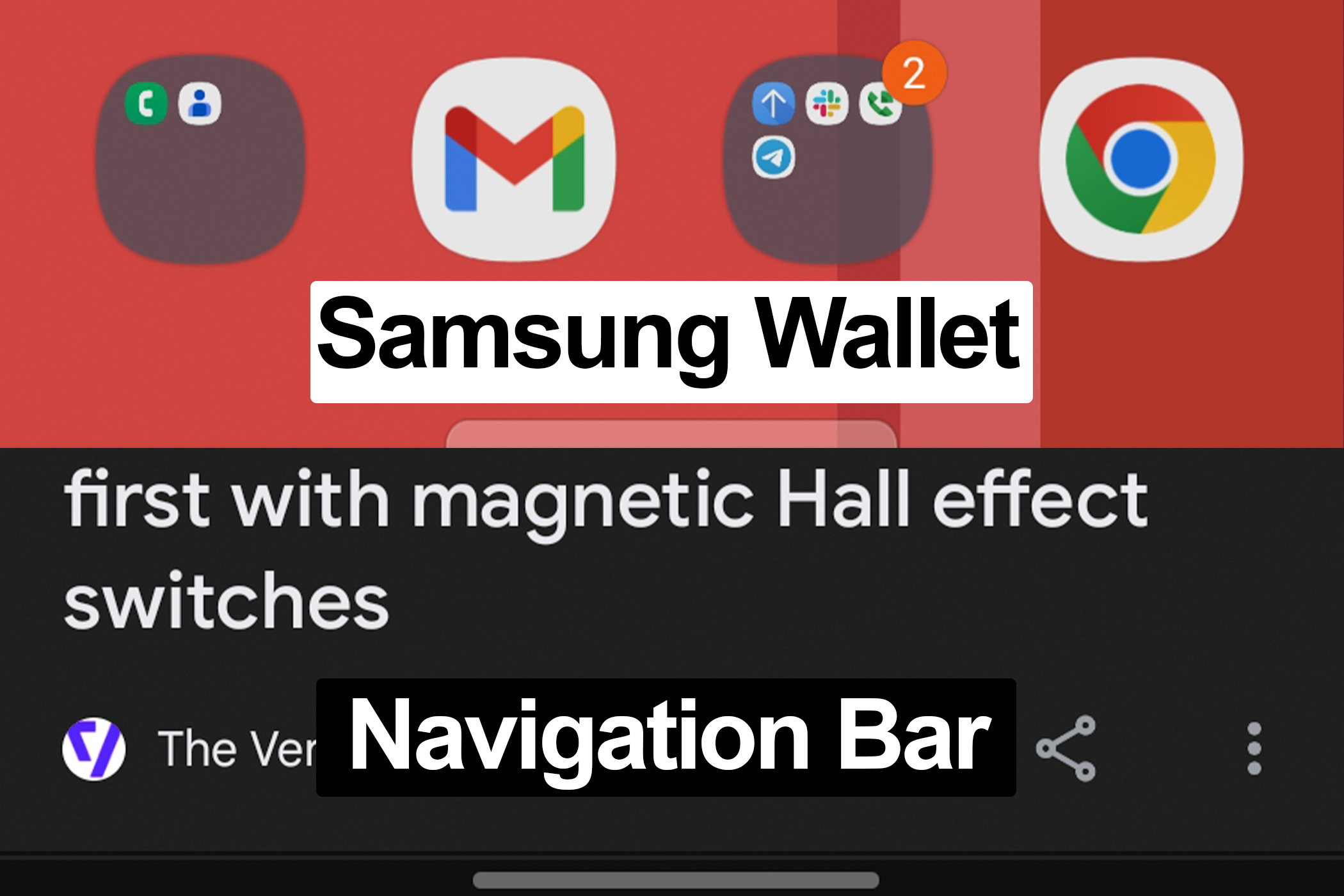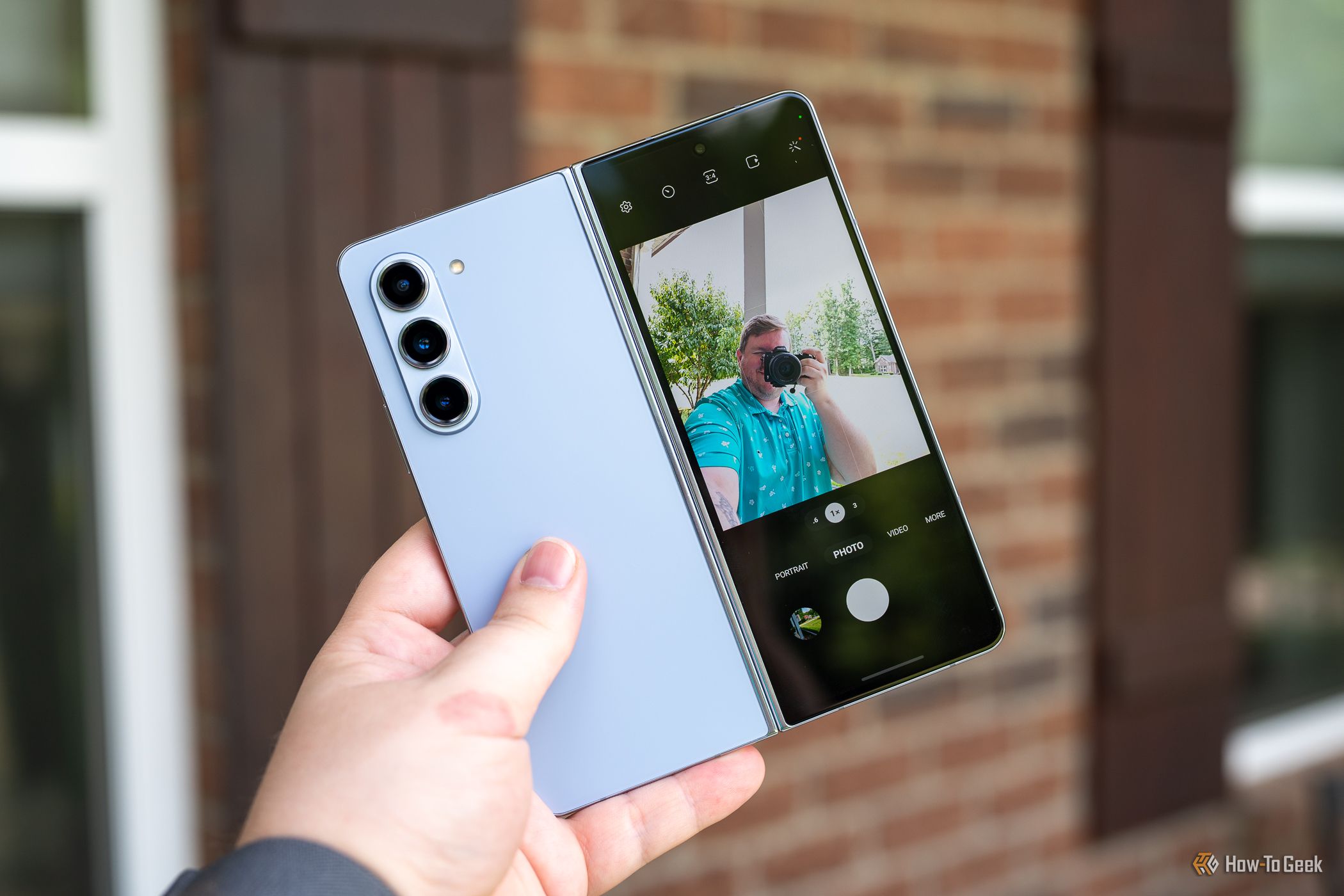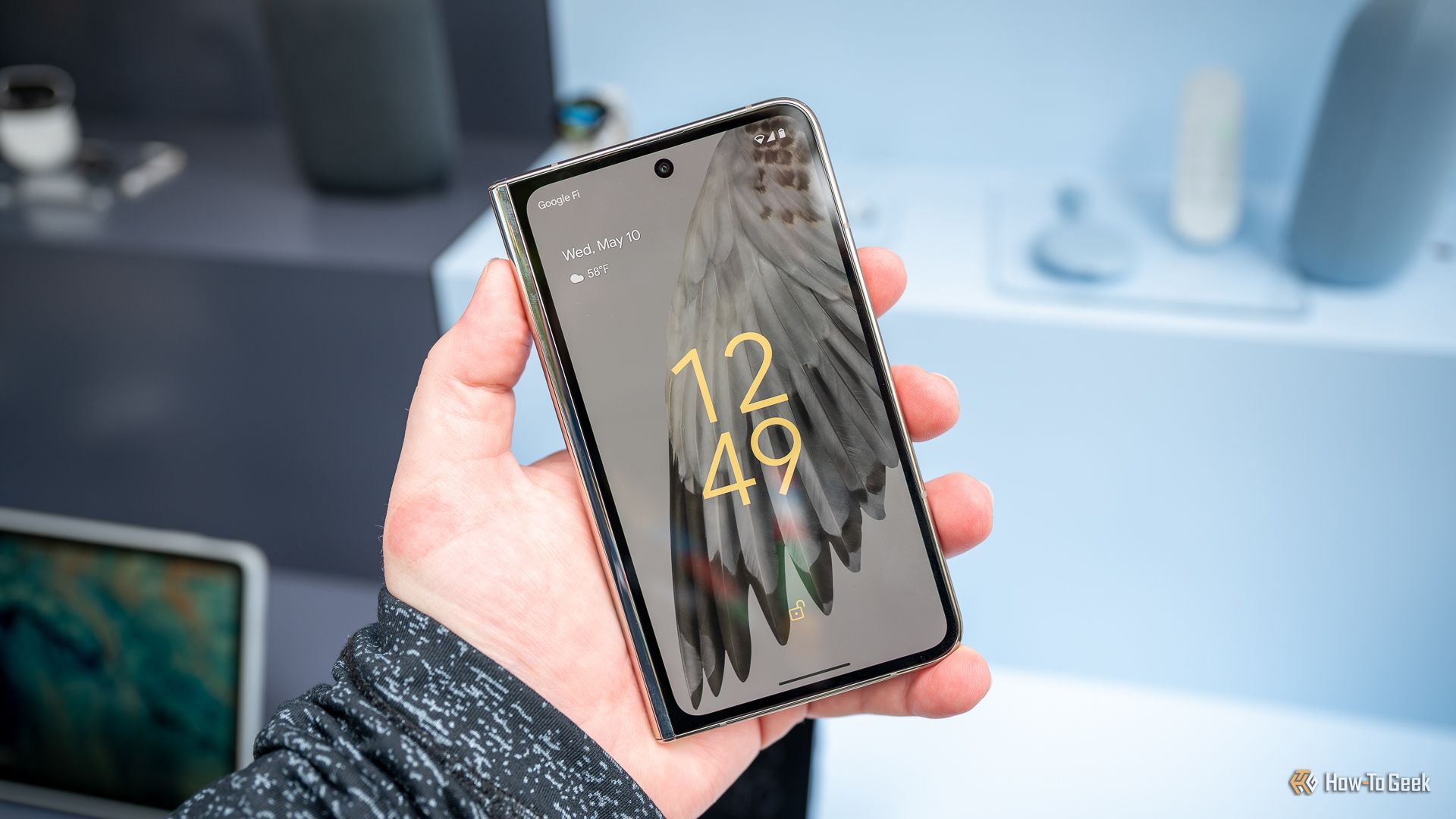When Samsung offered to fly me out to Seoul, South Korea, for its Galaxy Unpacked event, I had a feeling the phones it planned to launch were going to be great. Now that I’ve spent some time with the Galaxy Z Fold 5 and the Z Flip 5, I can confidently say that Samsung currently has the best foldables on the market (at least in the U.S.), but the smaller of the two phones saw the more noteworthy upgrades.
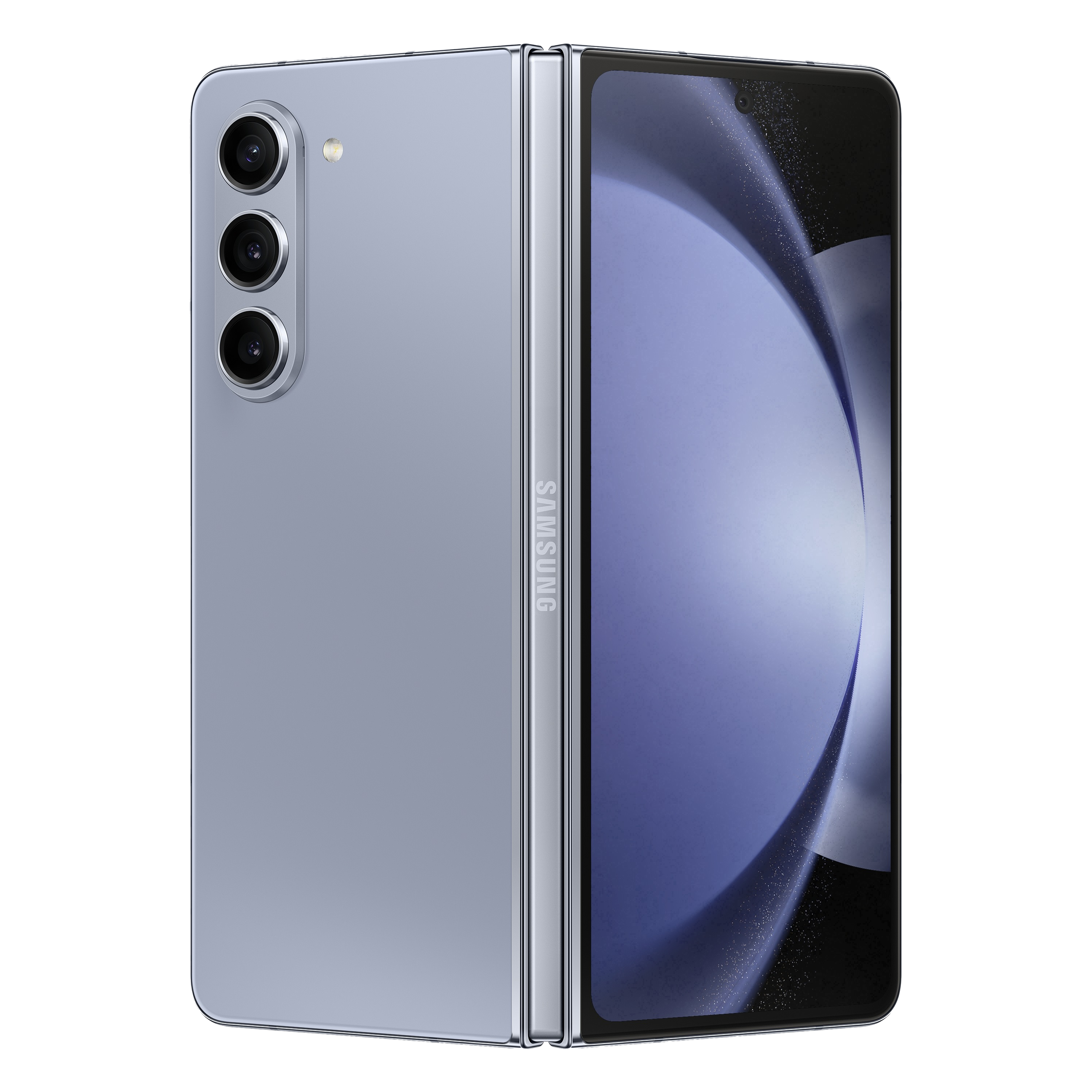
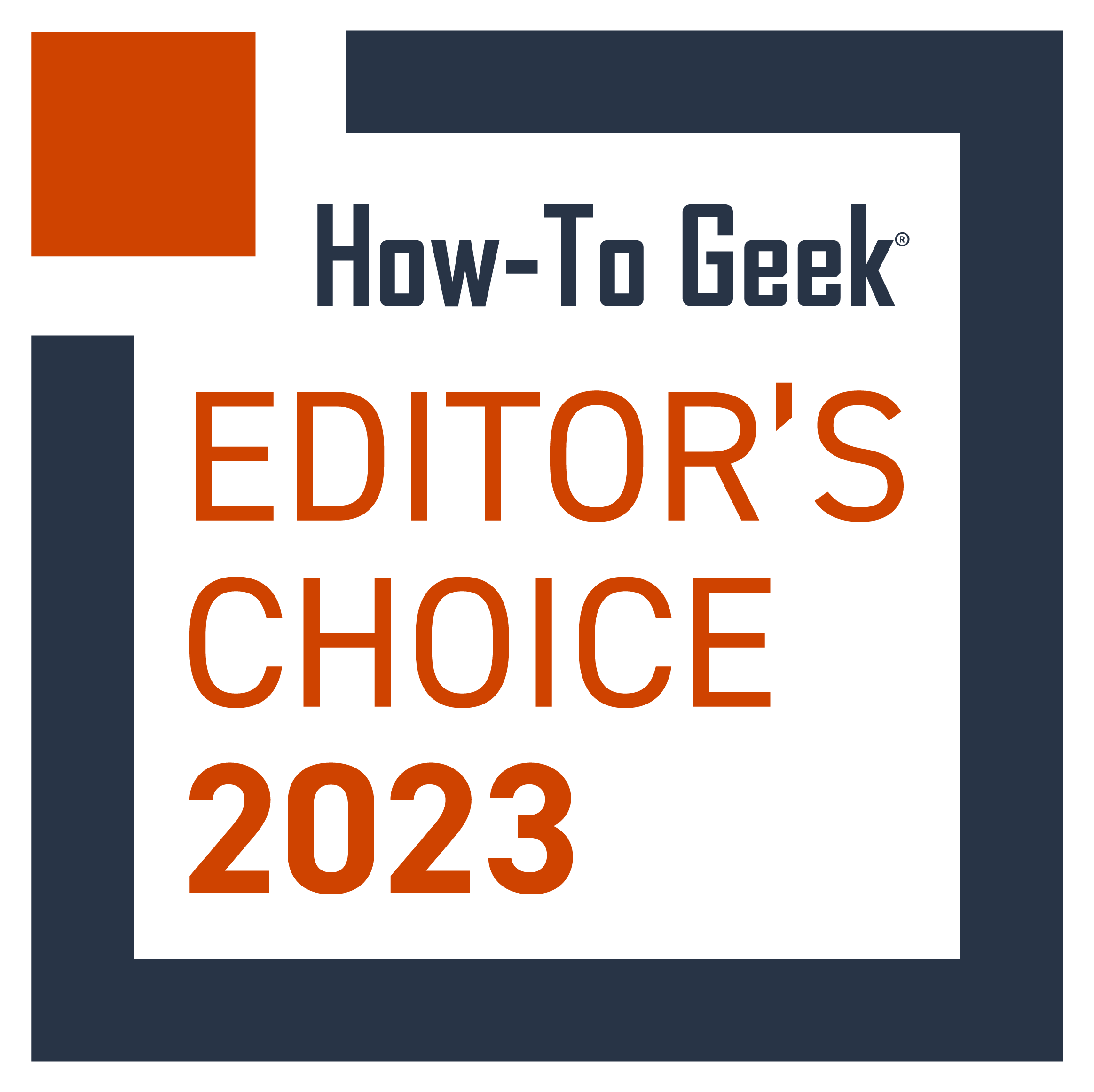
Samsung Galaxy Z Fold 5
The Galaxy Z Fold 5 is Samsung’s best foldable for 2023, packing a speedy Snapdragon 8 Gen 2 ‘for Galaxy’ chip, 12GB RAM, and superfast UFS 4.0 storage. The new Flex Hinge enables the phone to close fully flat, though the Fold 5 falls short in other aspects.
- Brand
- Samsung
- SoC
- Qualcomm Snapdragon 8 Gen2 Mobile Platform for Galaxy
- RAM
- 12GB
- Storage
- 256GB, 512GB, 1TB
- Battery
- 4,400mAh
- Ports
- USB Type-C 3.2, OTG
- Operating System
- Android 13 (One UI 5.1.1)
- Front camera
- 4MP f/1.8 under-display camera (80˚ FoV, 2.0μm pixels), 10MP f/2.2 cover display camera (85˚ FoV, 1.22μm pixels)
- Rear cameras
- 50 MP f/1.8 wide-angle (85˚ FoV, OIS, 1.0μm pixels), 12MP f/2.2 ultra-wide (123˚ FoV, 1.12μm pixels), 10MP f/2.4 telephoto (36˚ FoV, OIS, 1.0μm pixels)
- Connectivity
- 5G (inc mmWave), LTE, up to Wi-Fi 6E, Bluetooth 5.3, NFC
- Dimensions
- 67.1 x 155 x 13mm (2.6 x 6.1 x 0.5in) folded, 130 x 155, 6.1mm (5.1 x 6.1 x 0.24in) unfolded
- Colors
- Ice Blue, Phantom Black, Cream + Samsung.com exclusive Gray, Blue
- Weight
- 253g (8.92z)
- IP Rating
- IPX8
- Security
- Capacitive fingerprint sensor
- Cover display
- 6.2” Dynamic AMOLED 2X Infinity-O Display, 2316 x 904,120Hz Adaptive Refresh Rate, 402ppi, 1,750nits
- Interior display
- 7.6” Dynamic AMOLED 2X Infinity Flex Display, 2176 x 1812, 120Hz Adaptive Refresh Rate, 374ppi, 1,750nits
- Best-in-class hardware
- Processor can handle any you throw at it
- Battery life easily lasts all day
- Poor camera quality compared to other flagships
- Design hasn’t changes much in five generations
- Small One UI annoyances
Price & Availability: Make Sure You Grab a Discount
The Samsung Galaxy Z Fold 5 is available just about everywhere a smartphone is sold—including all major carriers, Amazon, and other electronic retailers—but I hope you have a phone to trade in or can cash in on a deal. Coming in at $1,799.99 for the 256GB model ($1,919.99 for 512GB and $2,159.99 for 1TB), Samsung’s latest and greatest foldable does not come cheap.
Design: Premium, But I’m Ready for a Refresh
Samsung launched the first Galaxy Z Fold in 2019, and in the four years since, the company has primarily been focused on refining the design and improving the device’s fragility. The most significant changes could be seen between the first and second generations, where the South Korean company greatly increased the cover screen size and improved the folding display’s overall usability.
Jumping forward to the Galaxy Z Fold 5, we have some of the most premium hardware that $1,800 can afford you. When you unfold the device and feel the quality of the hinge, you can tell that Samsung has spent years perfecting the feel of the phone.
Of course, the same could be said about last year’s Z Fold 4. This year’s main difference is the improved hinge that allows the two halves to fold completely flat, eliminating any display gap. While I wouldn’t say it’s a life-changing improvement, removing the possibility of debris making its way between the folded piece of glass is great. Plus, the closed design brings the Z Fold 5 in line with other foldables like the Google Pixel Fold and Motorola Razr+ 2023.
That new hinge has additional benefits. For one, it shaved off 10g of weight compared to the Z Fold 4. Secondly, the overall thickness (when folded) is now just 13.4mm compared to the Z Fold 4’s 15.8mm thickest side. All of this and the Z Fold 5 continues to be IPX8 water-resistant.
These changes don’t sound like much of an improvement, but the moment I picked up the Galaxy Z Fold 5, I noticed the weight difference immediately. One of the biggest complaints with foldables is that they tend to be heavy, so the closer Samsung gets to the weight of its traditional flagship phones like the Galaxy S23 Ultra (which comes in at 8.25oz), the better they’ll feel.
In addition to the new hinge, Samsung included a new shock-dispersion layer that should help protect the ultra-thin glass (UTG) from external impact and improves the foldable display’s back support structure. The company claims the Z Fold 5 is certified to survive over 200,000 folds, so we’ll have to see how well it stands the test of time.
Minor refinements and improvements aside, I want to touch on Samsung’s unchanging design of the Z Fold 5. As I mentioned, the device’s overall footprint hasn’t changed much in five generations; you still get an extremely slim front display and an almost square internal screen. Samsung did experiment with other aspect ratios, but they ultimately decided to stick with the ol’ tried and true.
The biggest issue with the narrow and tall design has to do with using the phone one-handed. I tried to demonstrate this in the photo below, but there’s next to no way to comfortably hold the Z Fold 5 and reach the top of the display. Of course, Samsung allows you to swipe down on the middle of the screen to get to your notifications, but some quick settings are still locked to the top of the device.
While I don’t mind the internal display’s aspect ratio (even though you’ll always be stuck with black bars when watching videos), I’m really hoping Samsung tries at least widening the Galaxy Z Fold 6’s cover screen.
Another problem I encountered half had to do with the design and half the software. With the fingerprint sensor embedded in the power button on the phone’s right side, it’s easy enough to unlock the device with my right thumb. Ideally, you could also use your left index finger if you plan to hold the foldable in your left hand. This would be easy enough, except Samsung requires the Galaxy Z Fold 5 to be unfolded when registering fingerprints.
Despite my best efforts, I could very rarely get the phone to unlock with my left index finger. The angle that I registered my biometrics with the Z Fold 5 fully unfolded must be just different enough that it doesn’t like my prints when the foldable is closed.
I understand Samsung didn’t want to or maybe couldn’t include an in-display fingerprint sensor in both of the device’s screens, it doesn’t stop me from longing for a rear fingerprint sensor or true biometric facial recognition like Apple’s Face ID.
Displays: Amazing Beautiful
Samsung has always been the top dog in the smartphone display world, and that doesn’t stop this year. Around front, under Corning’s Gorilla Glass Victus 2, you’ll find a 6.2-inch, 2316 x 904 120Hz AMOLED panel that looks beautiful and is incredibly responsive. The inside screen also features a 120Hz AMOLED display coming in at 7.6-inches with a resolution of 2176 x 1812.
There’s really nothing to complain about with either of these screens. During my two weeks of testing, I watched plenty of YouTube videos and Netflix movies on both displays and enjoyed every minute. Gaming was also fantastic on the internal screen as you have much more real estate to work with than a traditional smartphone.
Of course, I can’t review a foldable phone without talking about the obvious: its crease. You’ve most likely heard this before, but you stop noticing the line going down the internal screen within minutes of using the handset. Looking head-on, with the device fully unfolded and the screen on, it’s nearly impossible to see. Sure, your finger will run over the divot, but it won’t interrupt or ruin the experience of using the Z Fold 5.
Just be prepared for onlookers to comment on the abnormality when looking at the phone from the side—it’ll be much more noticeable to them.
Software: One UI Stays (Mostly) Out of the Way
Love it or hate it, Samsung continues to develop One UI, its custom skin that runs on top of Android 13. A couple of years ago, I probably would have gone on a rant about how much I hated all of the tweaks and changes Samsung makes to “stock” Android. But these days, One UI is rather tame. I still dislike the duplicate apps and never-ending settings menu, but I wouldn’t say Samsung has gone overboard.
Samsung’s software has also gotten really good at handling foldable phones—it’s one of the many advantages that comes with building five generations of Galaxy Z Folds. For example, the Z Fold 5 handles multitasking like a champ. Unfolded, you can get four apps running at once. While I never did this outside of testing, on more than one occasion I did run three.
For example, Android’s built-in password autofill doesn’t automatically pop up when signing in to some apps. With some help from the taskbar (which now holds up to four recent apps), I was able to get my password manager and two-factor authentication apps running alongside whatever app I was trying to sign in to. Copying over login credentials was as simple as working in multiple windows on a desktop computer.
My biggest gripe with One UI has to do with Samsung’s insistence on sticking with Android’s old three navigation buttons. Yes, it’s easy enough to switch to swipe gestures, but if you use Samsung Wallet (the company’s mobile payment app, similar to Google Wallet and Apple Wallet), the shortcut to open the app takes up the space where the navigation bar lives on the lock screen and home screen (illustrated below).
If Samsung were to make the change over to the navigation method Android introduced in 2017, I’d hope the company would find a new location for the Wallet shortcut. I’m personally tired of accidentally launching the Z Fold 5 into payment mode when all I want to do is view my recently opened apps.
Ben Schoon at 9to5Google wrote up a great opinion piece laying out additional reasons why Samsung needs to get with the times I recommend reading.
Performance: You Can’t Do Better
Powering the Galaxy Z Fold 5 is Qualcomm’s top-of-the-line Snapdragon 8 Gen2 Mobile Platform for Galaxy. You’ll also find 12GB of RAM and 256GB, 512GB, or 1TB of storage. Combined, you have one powerhouse of a smartphone. Throw any task at the foldable; it’ll chew it up and spit it out.
While I didn’t test DeX—Samsung’s desktop mode—I’m sure the handset would have worked just fine as a portable computer.
If you’re looking for raw benchmark numbers, don’t worry, I ran Geekbench 6 on the Galaxy Z Fold 5. The foldable received a single-core CPU score of 1997, a 5238 multi-core CPU score, and a 9470 GPU OpenCL score.
Battery Life: Surprisingly Solid
The issue with having multiple screens, especially one as large as 7.6-inches, is that those pixels take a lot of electricity to power. At the beginning of this review, I was worried that I wouldn’t be able to get a full day of battery life out of the Galaxy Z Fold 5. Let’s say I stopped worrying after day one.
On an average day with the Z Fold 5, I spend a good amount of time scrolling through social media apps like Twitter (X), Instagram, Threads, and TikTok, read news in Artifact, send text messages, and maybe watch a video or two on YouTube. With that type of usage, I was getting over 5 hours of screen-on time and between 10 and 12 hours of screen-off time.
I was never worried about running out of juice, but you can always use the included USB-C cable and a 25W power adapter to fast charge the foldable or throw it on a wireless charger.
Camera Quality: The Foldable’s Weakest Point
In total, the Samsung Galaxy Z Fold 5 has five cameras. The three on the back of the phone include a 50MP sensor, a 12mp ultra-wide lens, and a 10MP telephoto. You then have a 10MP selfie shooter cut out of the front cover, and a 4MP under-display camera (UDC) hidden beneath the internal folding screen.
Overall, you can take a decent photo with this device, but you could do better with a sub-$1,000 phone.
Rear-Facing Cameras
Unfortunately, the Galaxy Z Fold 5 cameras haven’t changed much compared to last year’s Z Fold 4. As such, I can only describe the photos taken on the foldable as “good enough.”
Looking through the photos I took in Seoul, I found most scenes to look a bit soft, and in darker areas, the blacks tended to be crushed. HDR and color reproduction are nailed in almost every case, but I’d expect more from a phone with this price tag.
The Z Fold 5’s okay camera quality carries over to video capture. Although all three sensors do a great job of capturing the overall atmosphere, you can see small artifacts as you zoom in, and the picture just isn’t as sharp as I would have liked.
If you’re looking for an Android phone specifically for its camera, I’d recommend checking out the Google Pixel 7 Pro or the Galaxy S23 Ultra.
Front-Facing Cameras
The hole punch camera on the cover display is probably the best if you need a quick selfie. It’s not the sharpest, but it’ll get you by in a pinch.
The under-display camera is by far the weakest of the five. As it’s shooting through the screen with pixels disabled, you have to expect a certain level of fuzziness. It’s like you’re trying to take a photo through a window covered in smudges. I wouldn’t recommend snapping selfies with this camera, but it’s good enough for a Zoom or Google Meet video call.
The under-display camera area is not this apparent to the naked eye. You can tell the pixels look different, but it’s easy to look past.
The last selfie in the grid above was taken using the primary rear-facing camera and the cover display as a viewfinder. While I found it incredibly unnerving to hold a somewhat fragile $1,800 phone backward, this is the route to take if you want to capture the sharpest image of yourself.
Competition: Others Are Catching Up Fast
Google Pixel Fold with its wider cover screen
Up until rather recently, Samsung has basically held a monopoly on foldable phones in the U.S. But several months ago, Google entered the area with the Pixel Fold. Coming in at an identical price and similar specs, some serious competition finally exists.
I haven’t had the opportunity to give the Pixel Fold a full review yet, but from my hands-on at Google I/O 2023, I can tell you I love the wider aspect ratio. The passport-sized front screen is much more comfortable to hold and type on, and when unfolded, the wider display is great for watching movies and reading Kindle books.
Obviously, everyone has their preference for phone size, but if Samsung doesn’t find a middle ground between where it is with the Z Fold 5 and the Pixel Fold, I hope it introduces a third foldable that does.
Of course, if the large phone that turns into a tablet design isn’t for you, you could always check out the other foldable Samsung announced: the Galaxy Z Flip 5. Of the two South Korean-made devices, the Flip 5 saw significantly more changes year-over-year. Its new 3.4in cover display is much more useful, and you won’t need to flip the phone open to accomplish basic tasks (like responding to a text message).
Should You Buy the Samsung Galaxy Z Fold 5?
If you’re in the market for a folding phone, the Galaxy Z Fold 5 is an easy recommendation. Samsung has taken what it has learned from the four previous Z Fold handsets and continues to perfect this device. Between the quality of the hinge and build materials, you start to forget about the somewhat fragile nature of the ultra-thin glass covering the internal display.
But if you’re not looking to spend $1,800 and want something smaller, everything great about the Z Fold 5 can now be found in the Galaxy Z Flip 5. It feels just as premium but in a more pocketable form factor.


Samsung Galaxy Z Fold 5
The Galaxy Z Fold 5 is Samsung’s best foldable for 2023, packing a speedy Snapdragon 8 Gen 2 ‘for Galaxy’ chip, 12GB RAM, and superfast UFS 4.0 storage. The new Flex Hinge enables the phone to close fully flat, though the Fold 5 falls short in other aspects.


